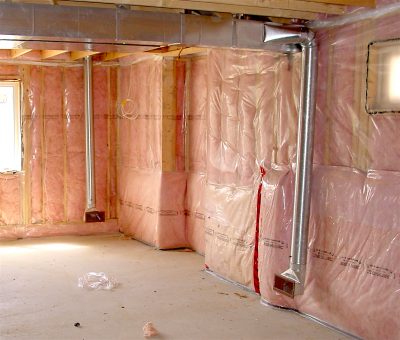Featured Video
A Reader Asks . . .
Q: How should I arrange the heating ducts as I convert an unfinished basement space into a couple of bedrooms? Right now the heating ducts are up at the ceiling. Should I extend them down to floor level? Do I need to bother installing return air ducts, too?

A: Heating finished basements in cold climates is always a challenge, and the proper installation of ducts is a surprisingly important part of success. I’d definitely bring the heat ducts down to the floor. That’s a vital start, but it won’t make for effective heating in the basement. Even more important than that is proper location of the cold air return air ducts.
It’s one thing to blow warm air into a room, but cooler air needs to be allowed out of the to make room for the warm stuff. Fail to do this and you’ll never have a warm basement. This is why cold air return ducts must also be installed at floor level, ideally on the opposite side of each room from the heating ducts. Return ducts deliver air back to the furnace for re-heating, and if they’re not located near the floor you’ll get cold pockets of stagnant air down low. This is a common problem in finished basements, but it doesn’t have to happen.
If you’re interested in excellent basement comfort, there’s something else you need to know about. No matter how warm your basement rooms are, the floors will never be exceptionally toasty. The only way to make that happen is with some infloor heating. The easiest option is electric infloor heating. Used just as a supplement to make the floor warm when you want it to be, operating a system like this doesn’t cost much money. I know one couple who had electric infloor heating installed just in front of the couch they have in the basement on a tiled floor. For pennies an hour, they could watch movies while enjoying exceptionally warm feet.
Click below to watch a video I made a few years ago about finishing basements so they don’t ruin the indoor air quality in your home. There’s more to it than meets the eye.